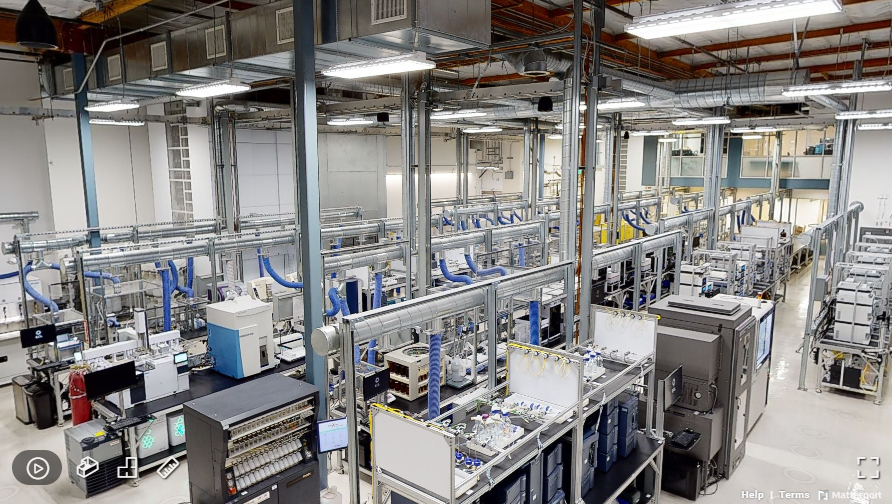Many assume that companies with research and development teams need laboratories, equipment, and personnel to carry out their R&D work in-house. But with the emergence of cloud laboratories, that view is shifting.
A cloud lab, also known as a remote lab, is a third-party laboratory that takes on experimental work on behalf of outsourcing organizations. This setup has multiple advantages, including better reproducibility, improved compliance and monitoring, and cost savings.
Here, we take a closer look at how cloud labs work and the benefits they offer. We also discuss some key players in the field and when to work with one of these organizations.
Introduction to cloud labs and their benefits
The term “cloud lab” has come to have multiple meanings. In some cases, it might indicate that all work for a given laboratory is documented in the cloud, enabling scientists and other stakeholders to access information from anywhere. In other scenarios, you’ll find the term referring to a group of researchers, often in different geographical locations, that collaborate through cloud lab ELNs and other remote infrastructure.
The cloud labs we’re discussing today refer to a specific type of remote laboratory that carries out experimental work on behalf of organizations on a contract or subscription basis. Remote labs leading this industry are fully equipped with the instruments and materials necessary to offer a comprehensive off-site experimentation service. These operations are highly automated and often run around the clock.
When using a cloud lab, the outsourcing organization no longer has to carry out experiments, which alleviates the need to operate R&D facilities and reduces costs associated with real estate, construction, utilities, and equipment. Research staff no longer have to perform experiments and instead focus on designing methods, dictating inputs, and analyzing results.
Some of the key benefits that a remote lab can offer include:
- Efficiency: Remote labs vastly increase the number of experiments conducted.
- Productivity: Scientists can spend less time performing manual experiments.
- Reproducibility: Automation reduces the risk of error.
- Flexibility: Researchers are not restricted by the instrumentation and materials that are available at hand.
With the emergence of remote labs, even companies with intense R&D operations can run from a standard office space. This significantly diminishes barriers to entry into the R&D industry.
How cloud lab companies are approaching the remote lab future.
In this emerging industry, there is one clear pioneer – Emerald Cloud Lab. However, other players are surfacing, including Strateos, Culture Biosciences, and Kebotix.
Emerald Cloud Lab
Emerald houses more than 200 instrument models and provides outsourcing organizations with full remote control via a proprietary interface. Emerald’s operation is highly automated, and is operational 365 days of the year, allowing for significant gains in efficiency, productivity, and reproducibility.

Part of the Emerald Cloud Lab facility. Source: Emerald Cloud Lab Virtual Tour
Strateos
Strateos offers services tailored toward small-molecule and biologics drug discovery, synthetic biology, and cell and gene therapies, and mainly works with pharmaceutical manufacturers. The company’s systems are built on its proprietary software, which can be implemented within existing labs.
Culture Biosciences
Culture Biosciences caters to a more niche market by offering a high-throughput bioreactor experiment service. Scientists design and analyze experiments via the Culture Cloud Console and are able to overcome reproducibility issues inherent in cell culture applications.
Kebotix
Kebotix assists in the discovery of chemicals and materials. In a partnership with the National Center for Advancing Translational Sciences (NCATS), Kebotix leveraged AI-driven optimization to substitute a 294-experiment process with just 54 experiments.
Deciding to work with a cloud lab
Some questions to ask when deciding to work with a remote lab include:
Can the cloud lab match or improve upon existing processes?
Although many cloud labs offer comprehensive coverage, you may want to use them for specific tasks. For example, a pharmaceutical firm might outsource the early stages of the drug discovery process and complete the remaining work in-house. In contrast, startups or academic research groups may operate exclusively in the cloud and forgo any traditional lab.
Will it offer cost savings when all factors are weighed?
Working with a cloud lab can significantly lower capital investment and thus alleviate financial risks. But for companies already running an R&D facility, the decision can be more complex. Outsourcing work will change the roles of existing lab personnel and possibly remove some positions entirely.
Will it meet compliance requirements?
It’s important to enquire about compliance before working with a remote lab. Find out about accreditations and ensure that operations adhere to standards within your industry. Bear in mind you may have to pay a premium for compliance services. For example, Emerald Cloud Lab includes GxP compliance assistance in its Enterprise packages.
Is your company ready for the cultural shift involved and the training necessary?
Personnel needs proper training in using the cloud lab’s software. Scientists must stay well-organized and on top of results so that they’re not wasting time with redundant experiments or unnecessary delays or downtime. New tools can often create more problems than they solve, so it’s vital to ensure they meet your needs and fit your desired company culture.